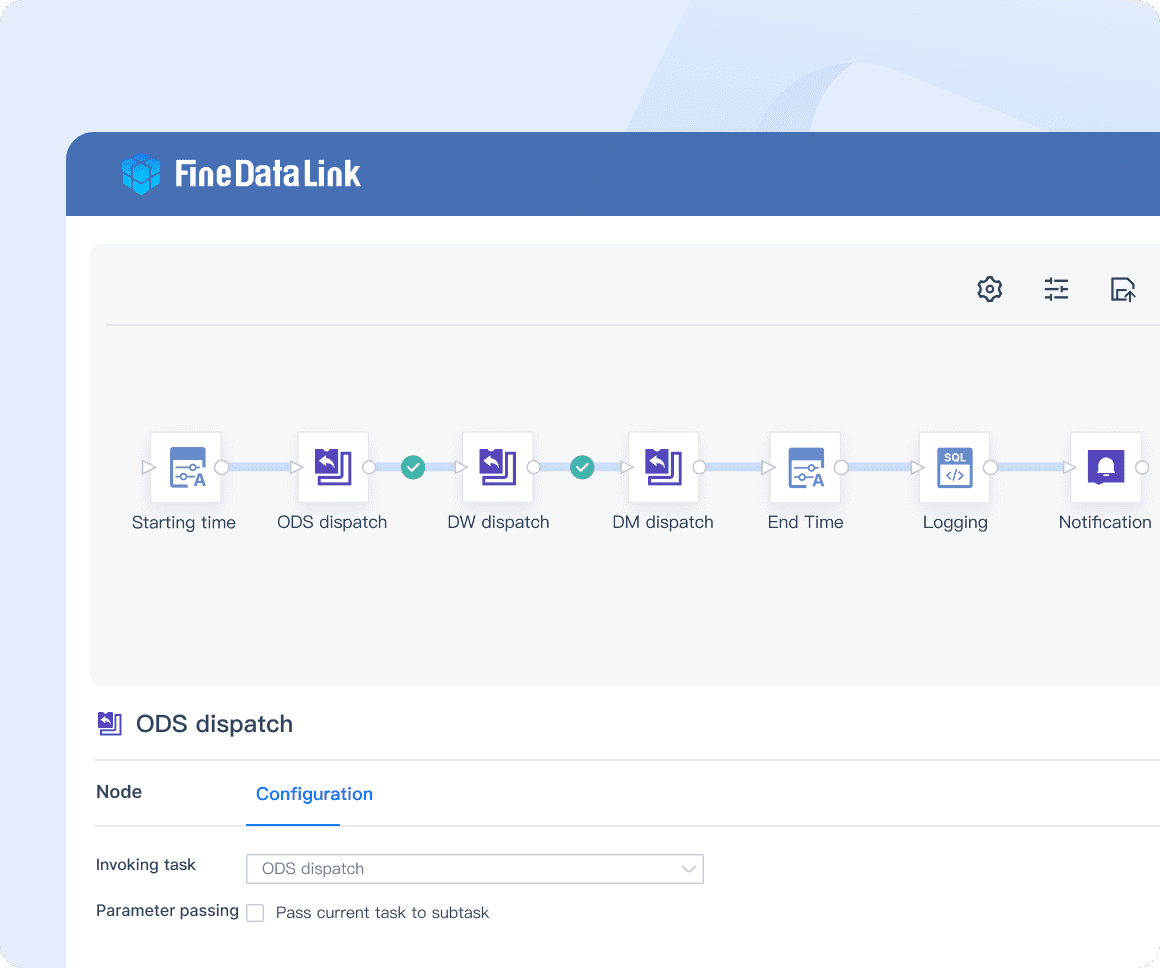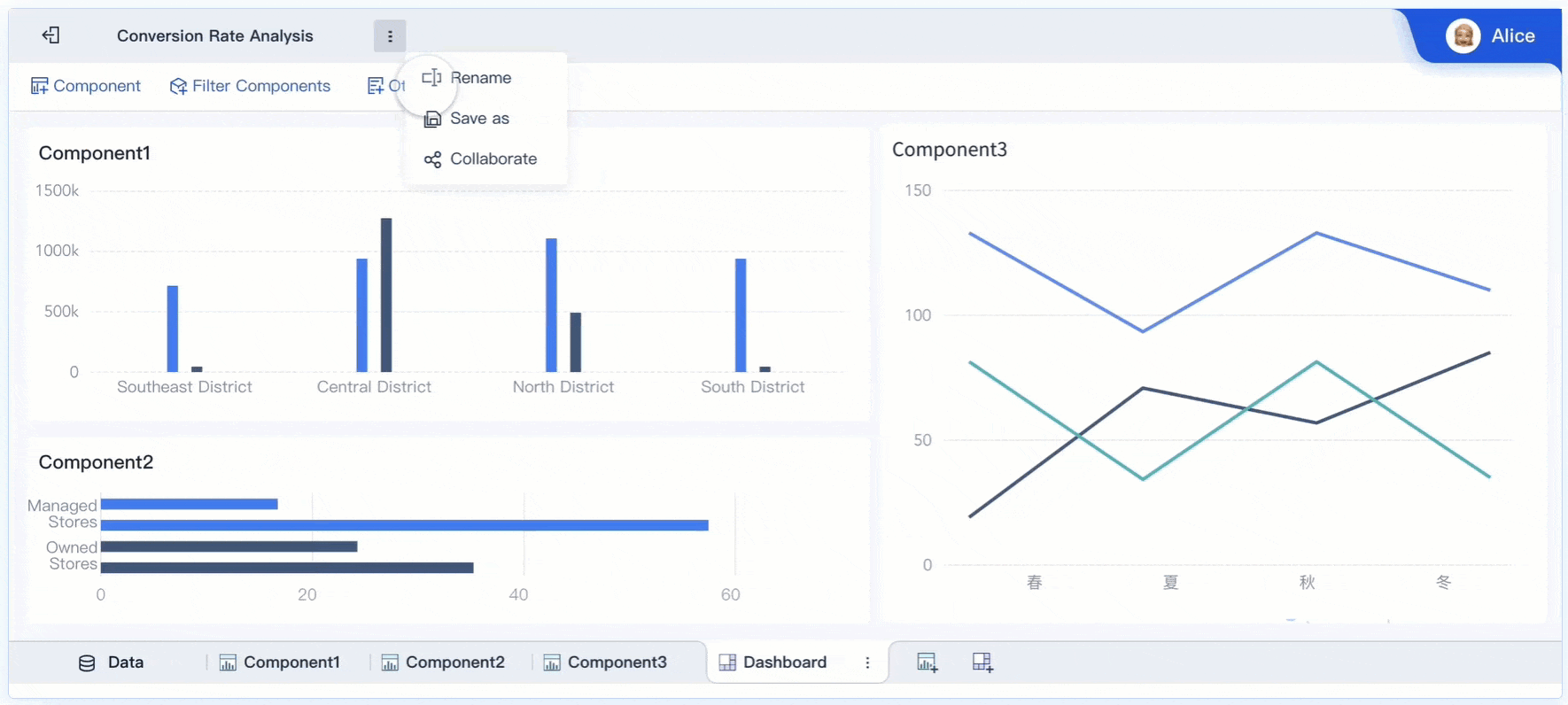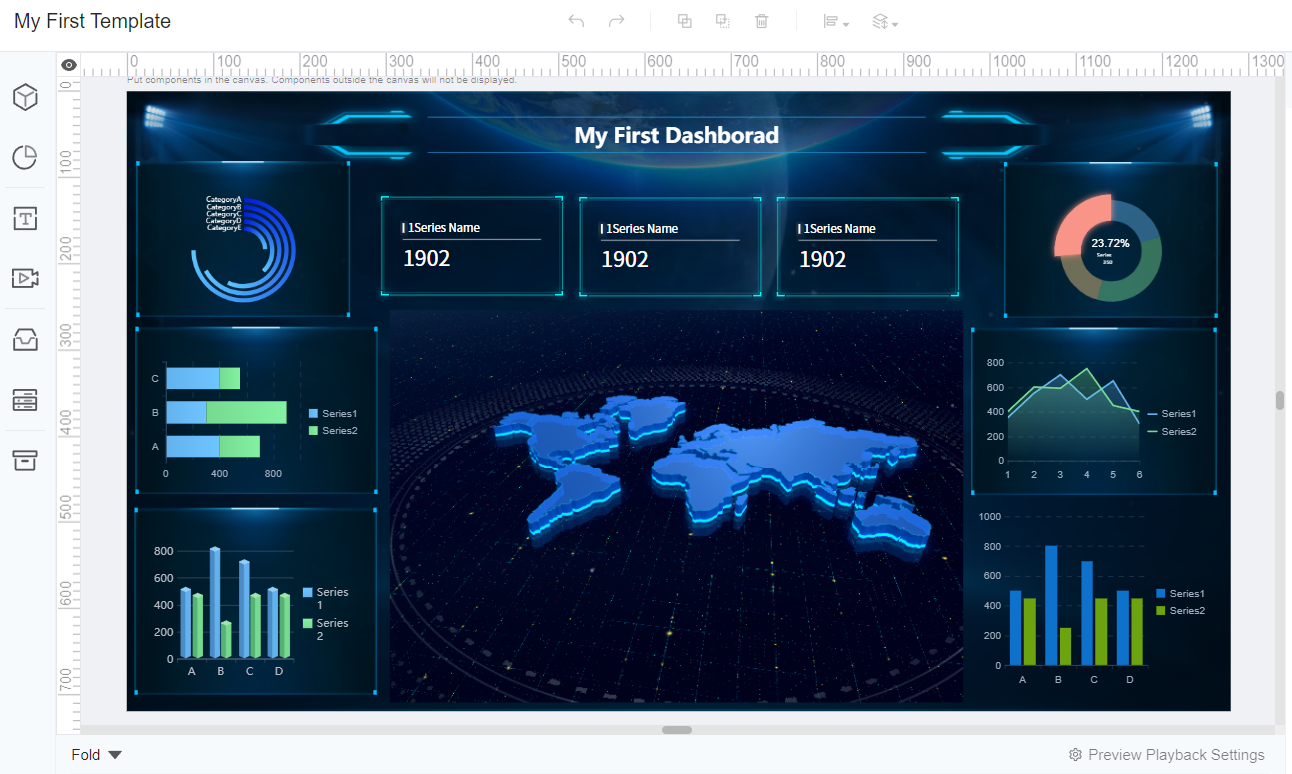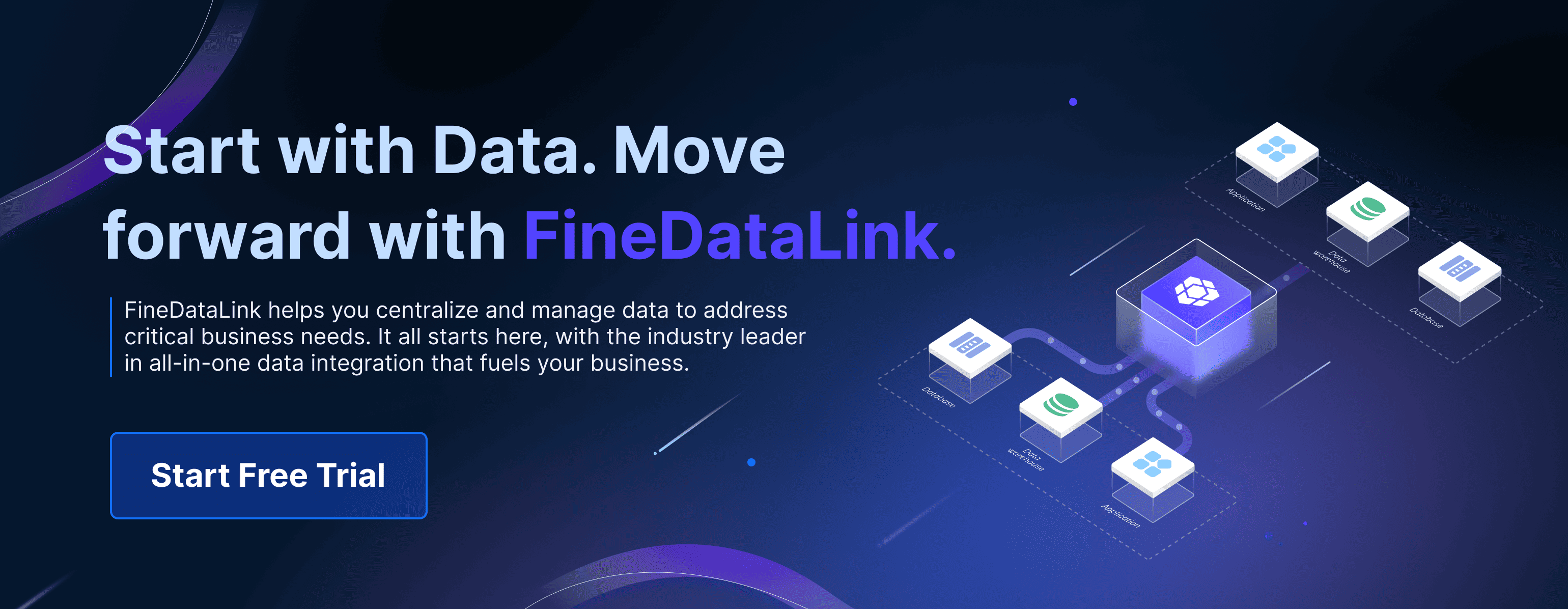Unstructured data dominates the digital landscape, comprising 80-90% of all data. This vast expanse includes everything from text and audio to sensor signals. Efficient unstructured data management is crucial for businesses. Without it, you risk losing over $3 trillion annually due to inaccessible data. FanRuan offers solutions like FineDataLink, FineReport, FineBI, and FineVis to help you harness this data. These tools empower you to transform raw information into actionable insights, ensuring your business remains competitive in a data-driven world.

Understanding Unstructured Data Management
Unstructured data management plays a pivotal role in today's digital age. As you navigate through the complexities of data, understanding its characteristics and significance becomes essential.
Definition and Characteristics of Unstructured Data Management
Unstructured data refers to information that lacks a predefined format or organization. Unlike structured data, which fits neatly into tables and databases, unstructured data comes in various forms. You encounter it daily in emails, social media posts, videos, and audio files. Managing this type of data requires specialized techniques and tools.

Examples of Unstructured Data
Unstructured data encompasses a wide range of formats. Here are some common examples:
- Text Documents: Emails, Word documents, and PDFs.
- Multimedia Files: Images, videos, and audio recordings.
- Social Media Content: Tweets, Facebook posts, and Instagram stories.
- Sensor Data: Information from IoT devices and sensors.
These examples highlight the diversity and complexity of unstructured data. Each type requires unique handling and processing methods.
Differences from Structured Data
Understanding the differences between structured and unstructured data is crucial for effective management:
- Organization: Structured data is highly organized and stored in relational databases. Unstructured data lacks this organization and is stored in its native format.
- Analysis: You can easily analyze structured data using traditional methods. Unstructured data requires advanced techniques like natural language processing (NLP) and image recognition.
- Format: Structured data is quantitative and fits into tables. Unstructured data includes qualitative formats like text, images, and multimedia.
These differences underscore the need for specialized unstructured data management strategies.
Importance in Business Context of Unstructured Data Management
In the business world, unstructured data management holds immense value. It impacts decision-making and plays a vital role in big data analytics.

Impact on Decision Making
Unstructured data provides insights that structured data cannot. By analyzing customer reviews, social media feedback, and other unstructured sources, you gain a deeper understanding of consumer behavior. This information guides strategic decisions, helping you tailor products and services to meet customer needs.
Role in Big Data Analytics
Unstructured data fuels big data analytics. It offers a wealth of information that, when processed correctly, reveals patterns and trends. By integrating unstructured data with structured data, you enhance the readability and usability of data models. This integration leads to more accurate predictions and informed business strategies.
Challenges in Managing Unstructured Data Management
Navigating the landscape of unstructured data management presents several challenges. You must address these to harness the full potential of your data.

Data Volume and Variety
Unstructured data comes in vast quantities and diverse formats. This complexity requires robust strategies for effective management.
Handling Large Data Sets
You encounter massive volumes of unstructured data daily. Emails, social media posts, and multimedia files contribute to this deluge. Managing such large datasets demands scalable storage solutions. Data lakes offer a flexible and cost-effective option. They ensure high availability and durability, allowing you to store vast amounts of data efficiently.
Managing Diverse Data Types
Unstructured data includes text, images, audio, and more. Each type requires unique processing techniques. For instance, text analytics software and natural language processing (NLP) tools help analyze textual data. Meanwhile, image recognition software processes visual data. You need to employ the right tools to manage these diverse data types effectively.
Compliance and Security Issues
Compliance and security pose significant challenges in unstructured data management. You must navigate complex regulations and protect sensitive information.

Data Privacy Concerns
Unstructured data often contains sensitive information. Identifying personally identifiable information (PII) within this data is crucial. Regulations like GDPR, CCPA, and HIPAA require you to protect such data. You must implement solutions that index all unstructured data. This approach helps you locate sensitive information and comply with privacy laws.
Regulatory Compliance Challenges
Adhering to regulations becomes complex with unstructured data. The scattered nature of this data complicates compliance efforts. You must pinpoint sensitive data locations across various file types. Using a comprehensive data management solution simplifies this task. It ensures you meet regulatory requirements and avoid fines or penalties.
Integration with Existing Systems
Integrating unstructured data with existing systems presents its own set of challenges. You must address compatibility issues and data silos.

Compatibility Issues
Unstructured data often resides in formats incompatible with traditional systems. You need to transform this data into structured formats for seamless integration. Programming languages like Python and R offer specialized libraries for this task. They help you convert unstructured data into usable formats, enhancing system compatibility.
Data Silos
Data silos occur when unstructured data remains isolated within departments. This fragmentation hinders data accessibility and usability. You must break down these silos to unlock the full potential of your data. Implementing a centralized data management platform facilitates data sharing across your organization. This approach promotes collaboration and informed decision-making.
How to Manage Unstructured Data Management
Effectively managing unstructured data requires a strategic approach. You need to focus on data collection, integration, cleaning, and preprocessing. These steps ensure that your data remains valuable and actionable.

Data Collection Strategies
Data collection forms the foundation of unstructured data management. You must gather data efficiently to maintain its quality and relevance.
Identifying Data Sources
Identifying the right data sources is crucial. You encounter unstructured data in various forms, such as emails, social media posts, and multimedia files. Recognizing these sources helps you gather comprehensive data for analysis. By understanding where your data originates, you can tailor your collection strategies to suit your needs.
Efficient Data Gathering Techniques
Efficient data gathering techniques streamline the collection process. You should employ automated tools to capture data from diverse sources. These tools reduce manual effort and minimize errors. Automation ensures that you collect data consistently and accurately, enhancing the overall quality of your dataset.
Data Integration and Cleaning
Once you collect data, integration and cleaning become essential. These processes ensure that your data remains consistent and free from redundancies.

Ensuring Data Consistency
Data consistency is vital for effective analysis. You must integrate data from various sources into a unified format. This step involves transforming unstructured data into structured formats. Tools like FineDataLink facilitate this process by offering seamless data integration capabilities. Consistent data enhances the accuracy of your analysis and decision-making.
Removing Redundancies
Redundancies can clutter your dataset and hinder analysis. You need to identify and remove duplicate or unnecessary data elements. This step improves data quality and ensures that your analysis focuses on relevant information. By maintaining a clean dataset, you enhance the efficiency of your unstructured data management efforts.
Data Preprocessing Techniques
Data preprocessing prepares your data for analysis. You must transform and enrich your data to extract valuable insights.

Data Transformation
Data transformation involves converting unstructured data into a usable format. You should use programming languages like Python and R for this task. These languages offer specialized libraries that simplify data transformation. By transforming your data, you make it compatible with analytical tools and enhance its usability.
Data Enrichment
Data enrichment adds value to your dataset. You can enhance your data by integrating additional information or context. This step provides deeper insights and improves the accuracy of your analysis. Enriched data empowers you to make informed decisions and drive business growth.
Scientific Research Findings: According to a study published in the CIO, data quality is essential for effective analysis. Cleaning data, removing unnecessary elements, and ensuring quality standards are crucial steps.
By following these strategies, you can manage unstructured data efficiently. This approach ensures that your data remains valuable and actionable, supporting your business objectives.
Tools and Techniques for Unstructured Data Management
Effectively managing unstructured data requires the right tools and techniques. You need to understand the various options available to make informed decisions.

General-Purpose Tools
General-purpose tools play a crucial role in analyzing and processing unstructured data. They help you extract valuable insights from complex datasets.
Text Analytics Software
Text analytics software allows you to analyze large volumes of textual data. These tools help you identify patterns, trends, and sentiments within text documents. By using text analytics software, you can gain insights from customer reviews, social media posts, and other textual sources. This information helps you make data-driven decisions and improve your business strategies.
Natural Language Processing (NLP) Tools
NLP tools enable you to process and understand human language. These tools are essential for analyzing unstructured data like emails, chat logs, and social media content. NLP tools help you extract meaning and context from text, allowing you to automate tasks such as sentiment analysis and language translation. By leveraging NLP tools, you can enhance your data analysis capabilities and uncover hidden insights.
Storage Solutions
Choosing the right storage solution is vital for managing unstructured data. You need to consider factors like scalability, cost, and accessibility.

Cloud Storage Options
Cloud storage offers a flexible and cost-effective solution for storing unstructured data. It provides high availability and durability, ensuring that your data remains accessible and secure. Cloud storage solutions allow you to scale your storage capacity as needed, making them ideal for handling large volumes of data. By using cloud storage, you can reduce infrastructure costs and focus on data analysis.
On-Premises Solutions
On-premises solutions provide greater control over your data storage. These solutions are suitable for organizations with strict security and compliance requirements. On-premises storage allows you to customize your infrastructure to meet specific needs. By choosing on-premises solutions, you can ensure data privacy and maintain control over your data management processes.
Processing Tools
Processing tools are essential for analyzing and transforming unstructured data. They help you extract meaningful insights and drive business growth.

Big Data Frameworks
Big data frameworks enable you to process and analyze large datasets efficiently. These frameworks support distributed computing, allowing you to handle massive volumes of unstructured data. By using big data frameworks, you can perform complex analyses and uncover patterns within your data. This capability enhances your decision-making and helps you stay competitive in a data-driven world.
Machine Learning Algorithms
Machine learning algorithms allow you to automate data analysis and prediction tasks. These algorithms learn from data patterns and make predictions based on historical data. By using machine learning algorithms, you can identify trends, detect anomalies, and optimize business processes. This approach empowers you to make informed decisions and improve operational efficiency.
Pro Tip: Investing in data lakes can enhance your ability to store and analyze unstructured data. Data lakes provide a centralized repository for all your data, enabling efficient querying and analysis. This investment supports data scientists and developers in their efforts to extract valuable insights from unstructured data.
By leveraging these tools and techniques, you can manage unstructured data effectively. This approach ensures that your data remains valuable and actionable, supporting your business objectives.
FanRuan's Role in Unstructured Data Management
FanRuan plays a pivotal role in managing unstructured data efficiently. You can leverage its suite of tools to transform raw data into actionable insights. Let's explore how FineDataLink, FineReport, and FineBI contribute to this process.

FineDataLink for Data Integration
FineDataLink serves as a comprehensive data integration platform. It simplifies complex data integration tasks, making it easier for you to manage unstructured data. With its low-code approach, you can synchronize data in real-time, ensuring seamless data flow across various systems. This capability proves invaluable when dealing with diverse data sources, such as social media content and multimedia files.
- Real-Time Synchronization: FineDataLink enables you to synchronize data across multiple tables with minimal latency. This feature ensures that your data remains up-to-date and accessible.
- ETL/ELT Functions: You can use FineDataLink for data preprocessing and transformation. Its ETL/ELT capabilities allow you to convert unstructured data into structured formats, enhancing data usability.
- API Integration: FineDataLink supports API integration, enabling you to share data between different systems effortlessly. This feature helps you break down data silos and promote collaboration within your organization.
By utilizing FineDataLink, you can streamline data integration processes and enhance overall efficiency.

FineReport for Reporting and Visualization
FineReport offers a powerful solution for reporting and visualization. It allows you to create dynamic reports and dashboards, providing deeper insights into your unstructured data. With its flexible report designer, you can generate reports quickly and easily.
- Diverse Visualization Types: FineReport supports a wide range of visualization options, from charts to interactive maps. These visualizations help you uncover patterns and trends within your data.
- Interactive Analysis: You can perform interactive analysis using FineReport. This feature enables you to explore data from different angles, enhancing your understanding of complex datasets.
- Mobile BI Capabilities: FineReport offers mobile BI capabilities, allowing you to access reports and dashboards on the go. This flexibility ensures that you can make informed decisions anytime, anywhere.
With FineReport, you can transform unstructured data into visually appealing reports, facilitating better decision-making.

FineBI for Business Intelligence
FineBI empowers you to conduct self-service business intelligence and analytics. It enables you to connect, analyze, and share data across your organization, fostering informed decision-making.
- High-Performance Computing Engine: FineBI features a high-performance computing engine capable of processing massive datasets. This capability allows you to analyze large volumes of unstructured data efficiently.
- Augmented Analytics: You can leverage augmented analytics with FineBI. This feature provides automatic analysis generation, helping you identify trends and insights quickly.
- Role-Based Access Control: FineBI offers role-based access control, ensuring data security and privacy. You can assign permissions based on roles and responsibilities, protecting sensitive information.
By using FineBI, you can enhance your data analysis capabilities and drive strategic growth.
FanRuan's tools—FineDataLink, FineReport, and FineBI—equip you with the necessary resources to manage unstructured data effectively. These solutions empower you to harness the full potential of your data, supporting your business objectives and ensuring competitiveness in a data-driven world.

FineVis for Data Visualization
In the realm of unstructured data management, FineVis stands out as a powerful tool for data visualization. You can transform complex datasets into clear, interactive visualizations that drive informed decision-making. FineVis offers a user-friendly interface, making it accessible to users of all technical levels.
FineVis provides over 60 chart types, allowing you to choose the best representation for your data. Whether you're dealing with sales figures or customer feedback, these charts help you visualize trends and patterns effectively. The dynamic 3D visualizations add depth to your analysis, enabling you to explore data from multiple perspectives.
Customization is a key feature of FineVis. You can create dashboards tailored to your specific needs. The drag-and-drop interface simplifies the process, allowing you to build dashboards without any coding skills. This flexibility ensures that you can adapt your visualizations to suit different business scenarios.

Real-time analytics is another strength of FineVis. You can access up-to-date information, enabling you to make timely decisions. This capability proves invaluable in fast-paced environments where quick responses are crucial. With FineVis, you stay ahead of the competition by leveraging real-time insights.
FineVis also supports adaptive design, ensuring seamless access across various devices. Whether you're using a smartphone, tablet, or PC, you can view and interact with your data anytime, anywhere. This accessibility enhances your ability to monitor business performance on the go.
Moreover, FineVis caters to industry-specific needs. It offers solutions for sectors like manufacturing, healthcare, and logistics. These tailored solutions optimize efficiency and performance, helping you achieve your business goals.
Company Information: Fanruan's Smart Factory Solution and ESG Energy Consumption and Carbon Emission Solution highlight the versatility of FineVis. These solutions demonstrate how FineVis can be applied to various industries, providing valuable insights and driving growth.
By utilizing FineVis, you unlock the full potential of your unstructured data. This tool empowers you to create compelling visual narratives, enhancing your data-driven strategies and ensuring success in a competitive market.

Best Practices for Efficient Unstructured Data Management
To manage unstructured data effectively, you should adopt best practices that focus on metadata management and data quality monitoring. These practices ensure that your data remains organized, accurate, and valuable.
Focus on Metadata Management
Metadata plays a crucial role in unstructured data management. It provides context and meaning to your data, making it easier to organize and retrieve.
Importance of Metadata
Metadata acts as a roadmap for your data. It describes the content, quality, and condition of your data, helping you understand its structure and purpose. By managing metadata effectively, you can improve data accessibility and usability. This practice enhances your ability to extract insights and make informed decisions.

Techniques for Effective Metadata Management
To manage metadata efficiently, you should implement the following techniques:
- Standardization: Use consistent metadata standards across your organization. This approach ensures uniformity and simplifies data integration.
- Automation: Employ tools that automate metadata generation and management. Automation reduces manual effort and minimizes errors.
- Regular Updates: Keep your metadata up-to-date. Regular updates ensure that your metadata reflects the current state of your data, enhancing its accuracy and relevance.
By focusing on metadata management, you can streamline unstructured data management and improve data quality.
Implementing Data Quality Monitoring
Data quality monitoring is essential for maintaining the integrity of your unstructured data. It involves continuous checks and automated tools to ensure data accuracy and consistency.

Continuous Data Quality Checks
You should conduct regular data quality checks to identify and rectify errors. These checks involve validating data against predefined criteria to ensure its accuracy. By performing continuous checks, you can detect anomalies early and maintain high data quality.
Automated Monitoring Tools
Automated tools play a vital role in data quality monitoring. They help you track data quality metrics and alert you to potential issues. By using automated tools, you can reduce manual intervention and enhance the efficiency of your unstructured data management efforts.
Company Information: FanRuan Software Co., Ltd. offers tools like FineVis that integrate with FineDataLink for flexible data development. These tools support metadata management and data quality monitoring, empowering you to manage unstructured data effectively.
By adopting these best practices, you can ensure efficient unstructured data management. This approach helps you maintain data quality, enhance data accessibility, and support your business objectives.
Efficient management of unstructured data is crucial for your business success. By using the right tools and best practices, you can transform raw data into valuable insights. Consider adopting a strategic approach to unstructured data management. This will enhance your decision-making and competitiveness. FanRuan's solutions, like FineDataLink and FineReport, offer robust support in this area. They empower you to integrate, visualize, and analyze data effectively. As you navigate the digital landscape, remember that leveraging unstructured data can drive growth and innovation in your organization.
Click the banner below to try FineDataLink for free and empower your enterprise to transform data into productivity!

Continue Reading about Data Management
Enhancing Analysis with Effective Data Cleaning Techniques
What Does a Data Management Specialist Do?
Understanding Engineering Data Management
Essential Guide to Supplier Data Management Best Practices
Best Data Management Tools of 2025
Master Data Management: What You Need to Know
FAQs on Unstructured Data Management
1. What is unstructured data?
Unstructured data refers to information that lacks a predefined format. It includes text, images, videos, and social media content. Unlike structured data, it doesn't fit neatly into tables or databases.
2. Why is managing unstructured data important?
Managing unstructured data is crucial because it makes up a significant portion of all data. Proper management helps you extract valuable insights, improve decision-making, and maintain competitiveness in a data-driven world.
3. What challenges do you face in managing unstructured data?
You encounter challenges such as handling large data volumes, ensuring data privacy, and integrating data with existing systems. These issues require robust strategies and tools for effective management.
4. How can you ensure data quality in unstructured data management?
You can ensure data quality by implementing continuous data quality checks and using automated monitoring tools. These practices help maintain data accuracy and consistency.
5. What role does metadata play in unstructured data management?
Metadata provides context and meaning to your data. It helps you organize and retrieve information efficiently. Effective metadata management enhances data accessibility and usability.
6. What tools can assist in managing unstructured data?
Tools like text analytics software, NLP tools, and big data frameworks are essential. They help you analyze, process, and store unstructured data effectively.
7. How does FanRuan support unstructured data management?
FanRuan offers tools like FineDataLink, FineReport, FineBI, and FineVis. These solutions help you integrate, visualize, and analyze unstructured data, turning it into actionable insights.
8. What are the best practices for managing unstructured data?
Focus on metadata management and data quality monitoring. Standardize metadata, automate processes, and conduct regular quality checks to ensure efficient data management.

The Author
Howard
Data Management Engineer & Data Research Expert at FanRuan
Related Articles

Top Data Warehouse Trends Shaping 2025 and Beyond
Stay ahead with 2025 data warehouse trends: cloud adoption, automation, real-time analytics, AI integration, and enhanced data security strategies.
Howard
Nov 17, 2025

Top 10 Digital Transformation Management Software Tools for 2025
Compare the top digital transformation management software for 2025 to boost efficiency, automate workflows, and drive business growth.
Lewis
Nov 16, 2025

Complete Guide to Low Code Data Integration Best Practices
Follow low code data integration best practices for secure workflows. Learn step-by-step methods to streamline, automate, and optimize your data processes.
Howard
Nov 13, 2025



